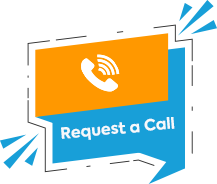“In the world of Internet Customer Service, it’s important to remember that your competitor is only one mouse click away.” – Doug Warner
This quote perfectly encapsulates the high-stakes reality of today’s competitive landscape.

Source – marketoonist.com
Every churned customer tells a story — a story of unmet expectations, missed opportunities, or better alternatives. For businesses, particularly in the SaaS industry, these stories represent lost revenue and a higher cost of customer acquisition.
Nowadays, customer churn isn’t just a metric; it’s a mirror reflecting your business’s ability to retain, engage, and delight its users. While some SaaS companies experience churn rates as high as 30%, recent data indicates that the average annual churn rate is approximately 5%[i].
So, how can businesses stay ahead of churn and foster lasting customer relationships? This blog post explores key metrics, cutting-edge strategies, and actionable insights to help you win the churn battle in 2025.

What is Customer Churn and Why Does It Matter?
Customer churn refers to the percentage of customers who stop doing business with your company over a specific period. While natural churn is inevitable, high churn rates can hinder growth, inflate acquisition costs, and lower profitability.
Here is how you can calculate churn –

Consider this: acquiring a new customer is up to seven times more expensive than retaining an existing one[ii]. For businesses relying on recurring revenue models, reducing churn is critical for sustainable growth.
The Metrics that Matter
To effectively combat churn, tracking the right metrics is key. Here are the most critical ones to monitor:
- Churn Rate: The percentage of customers who leave during a given period.
- Retention Rate: The flip side of churn that shows how many customers you retain.
- Lifetime Value (LTV): The total revenue a business can expect from a single customer over its lifecycle.
- Net Promoter Score (NPS): A measure of customer satisfaction and loyalty.
- Engagement Metrics: Track how frequently customers interact with your product or service.
How to Predict Customer Churn
Understanding why customers leave is the first step toward keeping them. By leveraging data, feedback, and predictive technology, businesses can identify at-risk customers and take proactive measures.

Behavioral Analytics: Spot the Warning Signs Early
Customer behavior is a goldmine of insights. Monitoring usage patterns, drop-offs, and inactivity can highlight customers at risk of leaving.
For instance, if a SaaS user logs in less frequently or abandons key features, it’s a red flag. These insights help you step in with targeted re-engagement campaigns such as in-app tutorials or personalized emails.
Customer Feedback: Hear the Voice of Your Customers
Surveys, reviews, and direct feedback are invaluable for identifying pain points. Dissatisfied customers often provide subtle clues about their likelihood of leaving.
You can use Net Promoter Score (NPS) surveys to gauge satisfaction and follow up with detractors. Addressing their concerns promptly can turn them into loyal advocates.
Predictive Models: Harness AI for Precision
AI and machine learning have transformed churn prediction. By analyzing historical data and identifying patterns, predictive models flag at-risk customers with remarkable accuracy.
Companies using predictive analytics have reduced churn by up to 15%, enabling them to proactively address customer needs and refine retention strategies[iii].
Strategies to Reduce Customer Churn
-
Onboard Like a Pro
First impressions matter. A smooth, value-driven onboarding process ensures customers quickly understand and benefit from your product.
Pro Tip: Personalize onboarding for different customer segments to make the process relevant and engaging.
-
Keep Engagement High
Disengaged customers are the first to churn. Regularly communicate through email campaigns, tutorials, and feature updates to keep them engaged.
Example: A SaaS platform increased retention by 20% by introducing in-app notifications highlighting new features.
-
Prioritize At-Risk Customers
Identify and focus on high-value customers showing signs of churn. Offer proactive support, exclusive benefits, or renewal incentives.
-
Act on Feedback
Listen to your customers. Address pain points quickly to build trust and show that their opinions matter.
-
Reward Loyalty
Incentivize long-term customers with loyalty programs, discounts, or exclusive perks. Implementing effective loyalty programs can lead to a 5% increase in customer retention, which can boost profits by up to 75%[iv].
Why Reducing Churn Matters More than Ever in 2025
With customer acquisition costs rising and competition intensifying, businesses can no longer afford to ignore churn. A 5% increase in customer retention can increase company revenue by 25-95%[v] and every retained customer translates to:
- Lower Costs: Retention costs are significantly lower than acquisition costs.
- Higher Revenue: Increased customer lifetime value drives profitability.
- Stronger Brand Loyalty: Happy customers become brand advocates, driving organic growth.
Conclusion
For a SaaS company, nothing is more heartbreaking than your customers switching to another brand, or you having to send a “We’ll miss you!” email.
Predicting and reducing customer churn is more than just mitigating losses—it’s about creating meaningful connections, delivering value, and fostering loyalty. With the right metrics, tools, and strategies, businesses can not only combat churn but also transform it into an opportunity for growth.
Ready to Tackle Churn Head-On? Let’s Talk!
Statistics References:
[i] https://www.zippia.com/advice/saas-industry-statistics/
[ii] https://aovup.com/stats/customer-retention/
[iii] https://www.annexcloud.com/blog/21-surprising-customer-retention-statistics-2023/
[iv] https://www.annexcloud.com/blog/21-surprising-customer-retention-statistics-2023/
[v] https://blog.hubspot.com/service/statistics-on-customer-retention











